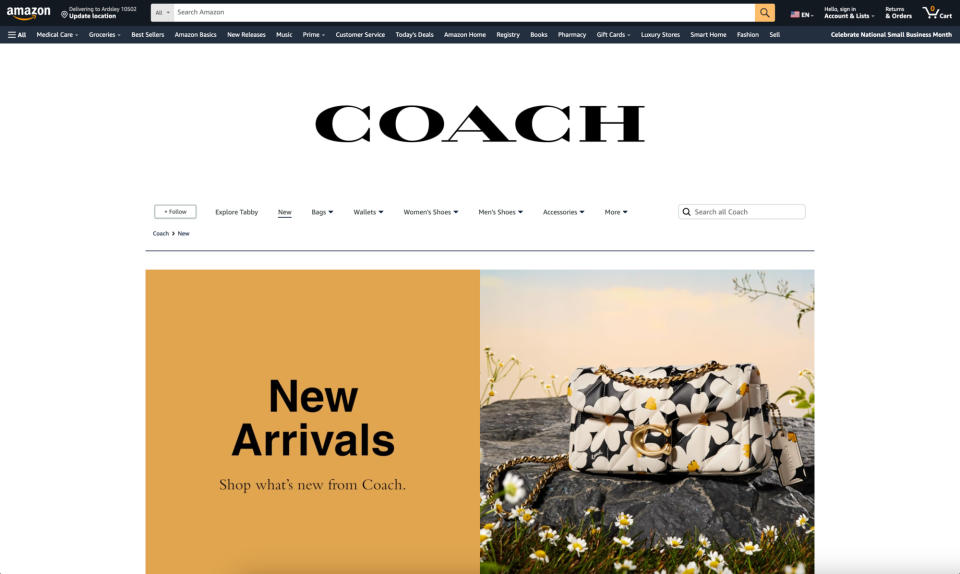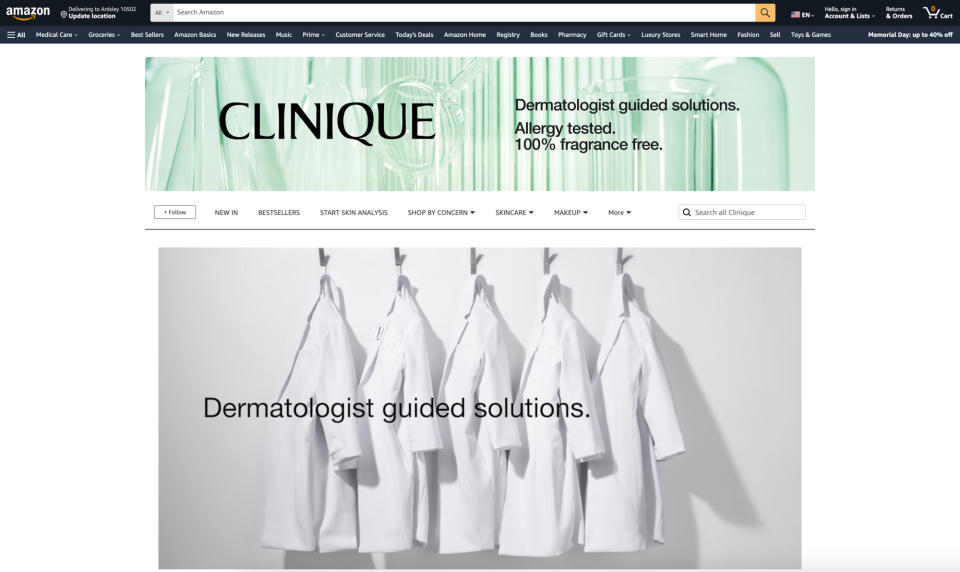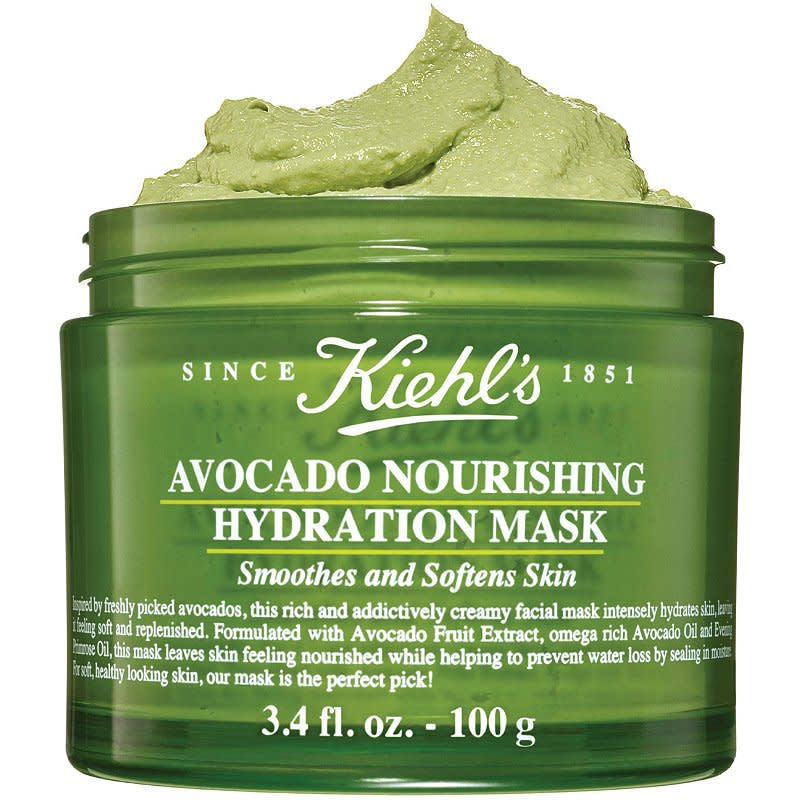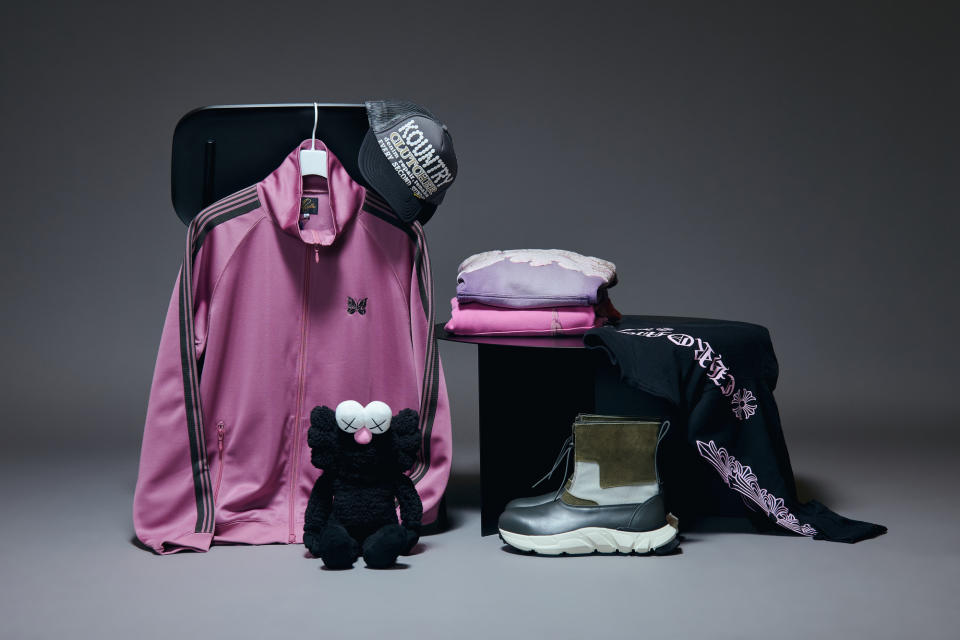Fashion and beauty are starting to make peace with Amazon.
From Coach to Clinique, premium brands that once kept their distance are now turning to the platform. The most recent is Kiehl’s Since 1851, which launched on Amazon on Thursday.
More from WWD
The shift marks a recognition of two fundamental truths: that there are millions of shoppers on Amazon every day, and that many brands are already sold on the platform, either through direct relationships or through the gray market. But while many premium-priced fashion and beauty brands have entered the platform, true luxury players are scarce, despite the 2020 launch of the Luxury Stores division.
Regardless, Amazon continues to work on broadening its fashion appeal.
Amazon’s U.S. sales of clothing, shoes and accessories reached $56.4 billion last year, according to an estimate from Coresight Research, which includes the value of third-party goods sold on the company’s marketplace.
That easily makes Amazon the dominant force in the fashion world — with sales to consumers that are more than 90 percent higher than Walmart Inc.’s $29.5 billion in gross merchandise value, according to Coresight. registers. (Although Walmart has plans to ramp up its apparel business, CEO Doug McMillon told investors this month.)
Brands are still cautiously entering the Amazon ecosystem.
Coach, owned by Tapestry Inc., started selling on Amazon in October, bringing one of the accessible luxury biggies to the site, although Tapestry CEO Joanne Crevoiserat said Coach’s Amazon trial is “pretty small.”
“Amazon is important,” Crevoiserat said. “We know that younger consumers are searching and discovering brands on that platform, and we wanted to put our best foot forward there.”
“We are pleased with the engagement we are seeing so far. It is small, but we are happy with it,” she said.


Coach is not alone. Hugo Boss, Tommy Hilfiger, Levi’s, Adidas, New Balance, Lacoste and Dr. Martens all sell on Amazon, balancing the benefits of the massive customer base with the risks of giving up a more direct relationship with consumers.
Amazon shoppers are looking for more than just a brand and, according to Coresight, prioritize delivery costs and speed, an easy-to-use website and brand and product selection. “More than half of Amazon apparel shoppers say they prefer Amazon.com because of lower delivery costs and faster speed,” the company said.
And Amazon has continually worked to improve that experience using AI, AR and virtual trial features to personalize the shopping experience while building delivery capacity and speed.
Simeon Siegel, equity analyst at BMO Capital Markets, expects more brands to join Amazon.
“At the end of the day – if D-to-C or that disappears from the conversation and if brands internalize that the right wholesale partners can be powerful partners,” Siegel said.
But he also had a word of warning.
“In retail, too often, the quality of sales erodes long before the actual sale,” says Siegel. “Companies are chasing revenue that is bad for their business and will cost them more in the future than they will earn today. But the problem is that a dollar looks very attractive today, even if it costs two tomorrow.
“Retail is a cycle of revenue overload, giving it all back and trying to reset the fundamentals and grow again,” he said.
After years of eschewing the platform in favor of its own sites, department stores and players like Tmall, Estée Lauder Cos. in March, a U-turn and Clinique debuted on Amazon. More brands from the beauty giant will follow this year.
On Amazon, Clinique sits side by side with L’Oréal brands including Lancôme, Youth to the People, IT Cosmetics, Urban Decay and Ralph Lauren Fragrance, as well as lines like Keys Soulcare and Shiseido.
“They’re going where the customer is,” said Olivia Tong, an analyst at Raymond James, of Lauder’s change in strategy.
Tong said the new distribution better positions Lauder against competition from both established multinationals and newer independent brands.
In its latest quarterly report, Lauder said Clinique’s debut on Amazon “largely exceeded expectations” and contributed to the brand’s market share gains.
Lauder Chief Financial Officer Tracey Travis told WWD that the e-commerce platform has the potential to become a key venue for the company.
“Amazon has a very broad reach from a consumer perspective, and as we see channel dynamics continue to shift in North America, it’s important for us to be able to reach our consumers wherever they want to shop,” said Travis, adding that various channels offer different shopping experiences.
According to data from Market Defense, a consultancy that helps beauty brands sell on Amazon, there were 741,340 searches on platforms using the term “Clinique” in April. During the holiday period, before Clinique came along, there were about 1 million.


Vanessa Kuykendall, chief operating officer of Market Defense, thinks Clinique will be a trendsetter in beauty.
“There are still many brands watching and waiting to see how big players and legacy brands make the change,” Kuykendall said. “It’s really interesting that older brands like Estée Lauder have held back, while very innovative, maybe even indie brands, newer brands have embraced Amazon.”
Amazon also seems to be giving L’Oréal a boost. When Lancôme rolled out to the site last year, it found that 73 percent of consumers who bought a product were new to the brand, said Ashley Helgans, an analyst at Jefferies.
Most recently, L’Oréal launched Kiehl’s on the platform, also with the goal of meeting customers where they are, said John Reed, general manager of Kiehl’s.


And Nicolas Hieronimus, CEO of L’Oréal, told the audience at CAGNY in February: “Ultimately, there are distribution channels where many qualified consumers shop. I assume you are all Amazon shoppers…. The results are very good, both in terms of experience, but also in terms of recruiting new consumers and that is very positive for the brand.”
If that’s true in the premium beauty space — and perhaps for accessible luxury fashion and accessories brands as well — pure luxury brands are still largely keeping their distance, even after Amazon expanded its Luxury Stores division into Europe two years ago.
Many European fashion and luxury brands had high expectations, but argue that Amazon has failed to deliver on its promises.
“In the beginning we felt very supported and we were doing good business, but then it all faded away,” said a brand owner who spoke on condition of anonymity.
“I don’t know if they really understand fashion, and I feel like they’re not focused on building the business. We expected to get more support, but in the end we lost confidence in them. We were counting on more loyalty, but that didn’t work out.”
Sally Singer, head of Amazon’s US fashion department, has left the company. Singer, a former fashion executive at Vogue, joined Amazon in 2020 and is now president at Art + Commerce in New York.
She had close ties to the designers and luxury brands, acting as a bridge between the glossy world of high-end fashion and the algorithmic, profit-driven Amazon.
The relationship between European brands and Amazon has never been easy.
Brand managers said they were disappointed that major luxury brands Kering and LVMH Moët Hennessy Louis Vuitton never arrived.
“There are no opportunities to take the smaller brands already on the site to the next level,” says a current manager who asked not to be named. Another added: “We expected them to come up with the most successful brands but that hasn’t happened so far.”
Another business executive who asked not to be named told WWD that luxury shopping in the US made more sense because the wholesale market is smaller due to the closure of so many department stores.
An Amazon spokesperson said: “We continue to expand the selection in luxury stores at Amazon and have added thousands of new styles this year alone. Amazon has a diverse, fashion-conscious customer base and we’re excited to make luxury items more accessible to a broader audience. We have seen a growing interest among our customers in luxury products, especially beauty, skin care, perfumes and second-hand designer handbags and accessories. We will continue to listen to customer feedback as we bring more luxury items to our stores, including expanding our beauty and jewelry ranges, and expanding ready-to-wear with additional menswear styles.”
Last month, Amazon began selling pre-owned luxury streetwear through Hypebeast’s new HBX Archives store, giving shoppers on the website access to top names, but not directly from the source.


While luxury holds its ground, the rest of fashion seems to be finally catching up.
“Customer acquisition is very expensive if you only have a direct channel, unless you are a super brand that happens to be top of mind,” says consultant Sonia Lapinsky, managing director at AlixPartners. “And then you look at the question: what is the best and most efficient way to acquire these customers?
“The fact that consumers are comfortable buying fashion on Amazon makes it difficult for brands to resist the exposure and broad customer access they get from going on Amazon,” she says.
“I don’t think brands are blind to the reality of Amazon,” she said. “There are ways to counter some of the downsides of Amazon that we think the smart retailers are doing [like] controlling your brand on the site…developing their own storefronts.”
That’s another balancing act that fashion companies have to perform.
The best of WWD